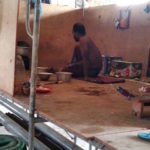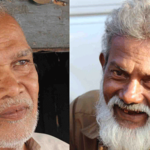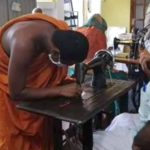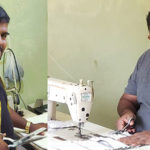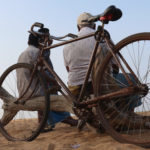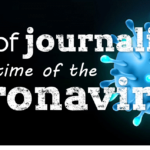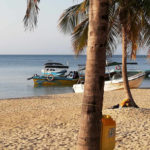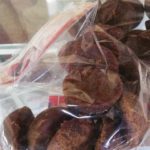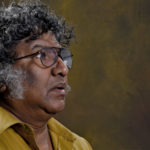What Connects Ethnicities?
Waters of Reconciliation
Rain falls with no heed to ethnic divisions. Rain quenches thirst of all humans, animals and trees. A ground-breaking ceremony was held in Thanthirimale, Anuradhapura recently, making a 60 year old dream of the people come true.
Water connects people. The Vavuniya and Mannar districts are geographically separated, language and religion widened this division.While the River Malwathu Oya connected these ends, the hearts of the people did not dilute and become one like the waters.
Malwathu Oya flows into the Indian Ocean from Mannar without much advantage being taken of it. An initial plan was drafted in 1969 to build a reservoir in Thanthirimale by blocking the river with a dam. However, the government of Sri Lanka failed to see it through. Thanthirimale Chandarathana Thero, Chief Deputy Sangha Leader of Northern and Eastern Provinces and also the Chief Incumbent of Thanthirimale ancient temple, continued advocating the Lower Malwathu Oya plan, and now with the foundation stone being laid in Thanthirimale, a dream of half a century is coming true.
Thanthirimale is an area often affected by drought, and being a farmers colony on the western border of the Anuradhapura district, agriculture is a main source of income. The villagers needed a permanent irrigation system to solve their drinking water and agricultural problems.The aim of the Lower Malwathu Oya project provides an irrigation system for the area. The Yodha Weva reservoir situated downstream in the Mannar district also needs a permanent water supply system. About 40,000 acres of paddy fields are cultivated in Mannar district with the water from Yodha Weva and are threatened by a limited water supply.
“The majority of our area are Muslim. Our main livelihood is agriculture and some farmers rear cattle. Only a few are engaged in businesses. Water is essential to all these activities. It is very difficult to irrigate about 8,500 acres in our area with little to no water supply. The government says there is a plan to cut a canal from the Lower Malwathu Oya project to divert water to this area, which makes us hopeful. We will be able to broaden trade relations with Anuradhapura, Vavuniya and Mannar if we get good harvest,” said A.M. Gadaffi, a representative of the Farmers’ Association, Veppankulama.
Wayab Fareed, a farmer of the same colony said, “The best part of our lives were spent parallel to droughts and war. The construction of the reservoir is good for the future of our kids. The value of land in this area will increase if there is a solution to the water problem,”
The reservoir will be close to the Thanthirimale ancient temple visited by thousands of devotees and tourists. Many people in Thanthirimale suffer from unknown chronic kidney disease, and the only way to solve the issue is with pure drinking water. Further, plans are underway for developments such as freshwater fishing and tourism.
D.B. Dingiri Menika of Rathgama Road, Thanthirimale gave us some insights on how the people of are responding to the development. “Roads of the area will be developed. The road to Wilpattuwa Wildlife Park will be built across our village. Our business will be better then.”
The estimated investment for the project is Rs. 23 billion. The Thanthirimale reservoir will have the capacity of 165,000 acre feet, making it second only to Senanayaka Samudraya in Ampara. The reservoir will nourish over 150 small and medium sized tanks that now face water scarcity. It will be on the border of three districts. People of different ethnic communities and languages will share this water. Therefore, the reservoir is being called the ‘Waters of Reconciliation’.
The happiest people in the ceremony were the farmers of Yodha Weva. T. Uthayan from Uilankulam said, “We attended this ceremony very happily. Our problems are being solved through development”
Reservoirs, ponds, rivers and roads have no divisions. They are common to both humans and animals. Humans must understand that reconciliation lies there.

